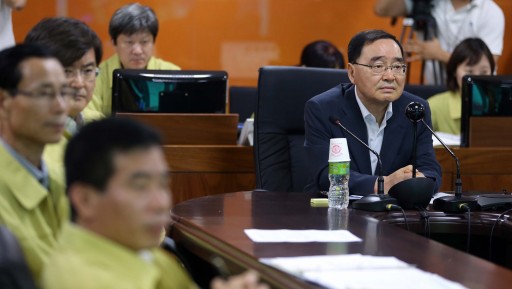 Seoul – Asiana Airlines Inc said the pilot in charge of landing the Boeing 777 that crash-landed at San Francisco’s airport on Saturday was training for the long-range plane and that it was his first flight to the airport with the jet.
Seoul – Asiana Airlines Inc said the pilot in charge of landing the Boeing 777 that crash-landed at San Francisco’s airport on Saturday was training for the long-range plane and that it was his first flight to the airport with the jet.
Subscribe to our Daily Roundup Email
“It was Lee Kang-kook’s maiden flight to the airport with the jet… He was in training. Even a veteran gets training (for a new jet),” a spokeswoman for Asiana Airlines said on Monday.
The plane was travelling “significantly below” its intended speed and its crew tried to abort the landing just seconds before it hit the seawall in front of the runway, the U.S. National Transportation Safety Board said on Sunday.
“He has a lot of experience and previously flown to San Francisco on different planes including the B747… and he was assisted by another pilot who has more experience with the 777,” the spokeswoman said.
Lee, who started his career at Asiana as an intern in 1994, has 9,793 hours of flying experience, but only 43 hours with the Boeing 777 jet.
Co-pilot Lee Jeong-min, who has 3,220 hours of flying experience with the Boeing 777 and a total of 12,387 hours of flying experience, was helping Lee Kang-kook in the landing, the spokeswoman said.
National Transportation Safety Board Chairwoman Deborah Hersman said Sunday that it was too early to say whether pilot error or mechanical failure were to blame.
But she said there was no evidence of problems with the flight or the landing until 7 seconds before impact, when the crew tried to increase the plane’s speed and the plane responded normally. The control tower was not alerted to any plane issues.
Witnesses said the plane on Saturday appeared to be too low as it approached the runway, hit the ground before the runway started and the impact sheared off part of the tail of the plane and possibly landing gear as well.
Asiana’s chief executive said on Saturday that he did not believe the fatal crash was caused by mechanical failure, although the carrier refused to be drawn on whether the fault laid with pilot error.

Nebech
Common sense dictates that if an airline wishes to train its pilots on the operation of a new aircraft, which they are unfamiliar with, that it be done with the absence of passengers, or in a simulator. It should never be done by a pilot who has never landed at a specific airport, with a plane full of passengers. American pilots do not train in this manner; Congress and the FAA are going to have to exercise better oversight of the safety training, which foreign pilots receive. This has been talked about for years, but nothing substantial has been done. For example, the English proficiency of many foreign pilots who land in the USA, are not always the best. In the past, this has led to fatal accidents.
Its a shame how a person without the right experience can crash a real aviation art like the Boeing 777 and leave a damp on it, let alone causing injuries and death, this asiana airline needs to suffer the consequences or even be close down